
Copernical Team
SpaceX puts another 53 Starlinks in orbit with midnight launch
 Elon Musk's SpaceX launched 53 Starlink satellites from Florida early Saturday morning after a short delay. The company was scheduled to launch the spacecraft on a Falcon 9 rocket at 11:23 p.m. EDT from Complex 40 at Cape Canaveral Space Force Station. Liftoff time was instantaneous, meaning any problems could prompt a delay of about 24 hours to Saturday night.
Elon Musk's SpaceX launched 53 Starlink satellites from Florida early Saturday morning after a short delay. The company was scheduled to launch the spacecraft on a Falcon 9 rocket at 11:23 p.m. EDT from Complex 40 at Cape Canaveral Space Force Station. Liftoff time was instantaneous, meaning any problems could prompt a delay of about 24 hours to Saturday night. NASA's Perseverance rover hightails it to Martian Delta
 The rover's self-driving capabilities will be put to the test this month as it begins a record-breaking series of sprints to its next sampling location.
NASA's Perseverance Mars rover is trying to cover more distance in a single month than any rover before it - and it's doing so using artificial intelligence. On the path ahead are sandpits, craters, and fields of sharp rocks that the rover
The rover's self-driving capabilities will be put to the test this month as it begins a record-breaking series of sprints to its next sampling location.
NASA's Perseverance Mars rover is trying to cover more distance in a single month than any rover before it - and it's doing so using artificial intelligence. On the path ahead are sandpits, craters, and fields of sharp rocks that the rover SpaceX aims for late night Starlink launch
 Elon Musk's SpaceX plans to launch 53 Starlink satellites from Florida late on Friday night, days after the company marked its 20th anniversary.
The company aims to launch the spacecraft on a Falcon 9 rocket at 11:23 p.m. EDT from Complex 40 at Cape Canaveral Space Force Station. Liftoff time is instantaneous, meaning any problems could prompt a delay of about 24 hours to Saturday night
Elon Musk's SpaceX plans to launch 53 Starlink satellites from Florida late on Friday night, days after the company marked its 20th anniversary.
The company aims to launch the spacecraft on a Falcon 9 rocket at 11:23 p.m. EDT from Complex 40 at Cape Canaveral Space Force Station. Liftoff time is instantaneous, meaning any problems could prompt a delay of about 24 hours to Saturday night Standing tall: Moon rocket milestone for Artemis
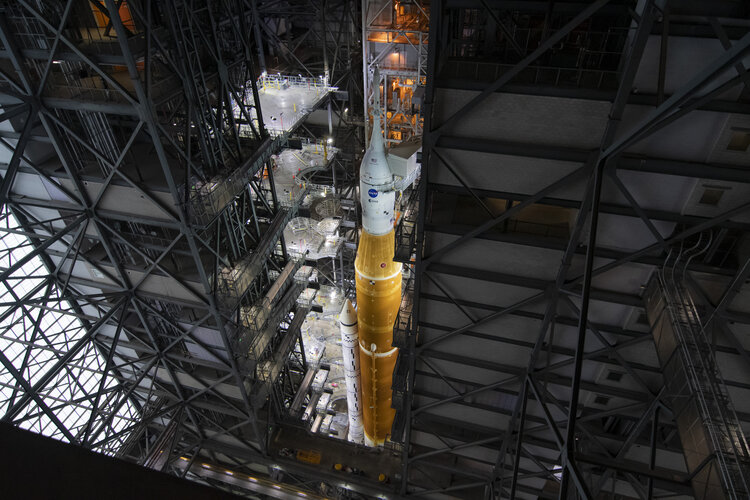
Artemis I rocket rolls to launch pad at Kennedy Space Center
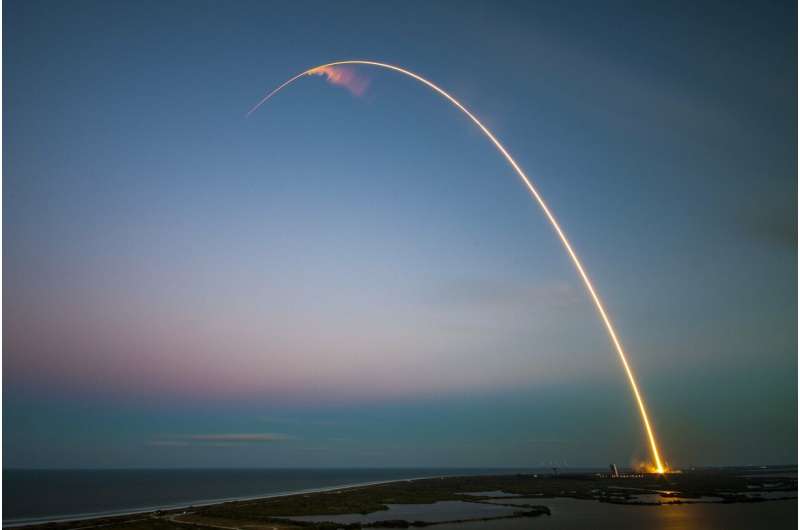
The first trip to the moon for NASA's new rocket has one more major hurdle, but it's taking the jump nice and slow as Artemis I began its 4.4-mile journey with a top speed of 0.8 mph to the launch pad Thursday.
The 5.75-million-pound, 322-foot-tall combination of the Space Launch System, Orion capsule and mobile launcher were placed on NASA's crawler-transporter 2 for the 11-hour trip that began just before 6 p.m. to Launch Pad 39-B, where mission managers plan on doing a wet dress rehearsal within the next month.
Thousands crowded the parking lots and open fields surrounding the Vehicle Assembly Building cheering as NASA Administrator Bill Nelson spoke with the towering hardware in the background.
"There's no doubt that we are in a golden era of human space exploration, discovery and ingenuity in space, and it all begins with Artemis I," he said, thanking the NASA employees and family members gathered for the event. "Our workforce has been a relentless spirit. We imagine. We build. We never stop pushing the envelope of what is possible."
Also speaking was Kennedy Space Center director Janet Petro, who pointed out Artemis was following in the trail of 60 years of space exploration.
Russian trio blast off for ISS in shadow of Ukraine war

Three Russian cosmonauts blasted off to the International Space Station Friday, as Moscow's military intervention in Ukraine brought the Kremlin's relations with the West to their lowest point since the Soviet era.
Russian space veteran Oleg Artemyev and rookies Denis Matveyev and Sergei Korsakov set off at 1555 GMT, a NASA live feed showed, beginning a three-hour ride to the orbital lab where they will be greeted by a crew of two Russians, four Americans and one German.
Russian space agency Roscosmos confirmed in a statement that the trio had successfully entered orbit beginning a half-year mission aboard the lab.
In the years since Russia's 2014 annexation of the Ukrainian peninsula of Crimea triggered a first wave of Western sanctions, space has proved an outlier of cooperation between Moscow and its American and European counterparts.
But tensions even in this field grew after Russian President Vladimir Putin appointed nationalist ally Dmitri Rogozin—an enthusiastic supporter of the current invasion—as head of Roscosomos in 2018.
"Ours! For the first time in many years—a completely Russian crew," Rogozin wrote on Friday prior to the launch on Twitter—a messaging service that has been blocked in Russia since March 4 as part of a crackdown on social media and the independent press.
3 Russian cosmonauts arrive at International Space Station
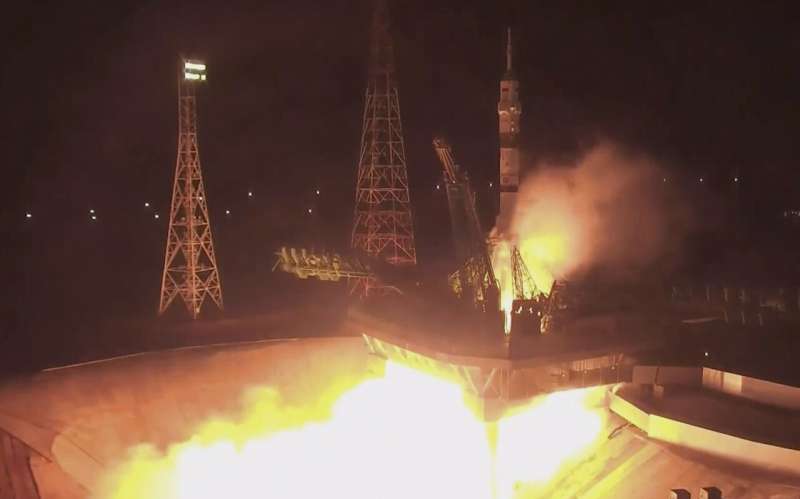
A trio of Russian cosmonauts arrived at the International Space Station on Friday, the first new faces in space since the start of the Russian war in Ukraine.
A solar power station in space? How it would work, and the benefits it could bring
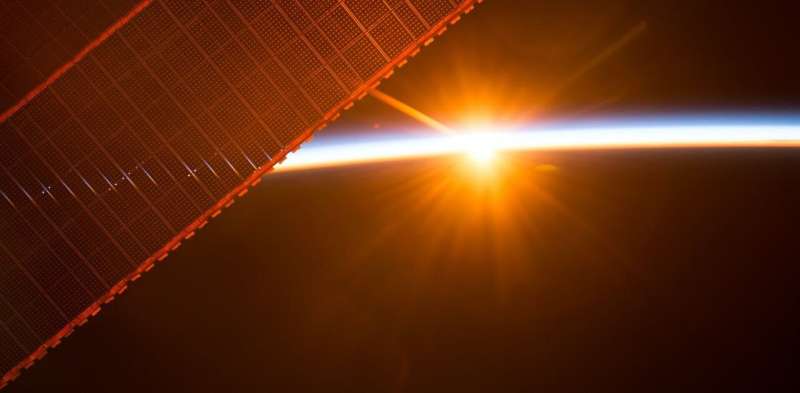
The UK government is reportedly considering a £16 billion proposal to build a solar power station in space.
Yes, you read that right. Space-based solar power is one of the technologies to feature in the government's Net Zero Innovation Portfolio. It has been identified as a potential solution, alongside others, to enable the UK to achieve net zero by 2050.
But how would a solar power station in space work? What are the advantages and drawbacks to this technology?
Space-based solar power involves collecting solar energy in space and transferring it to Earth. While the idea itself is not new, recent technological advances have made this prospect more achievable.
The space-based solar power system involves a solar power satellite—an enormous spacecraft equipped with solar panels. These panels generate electricity, which is then wirelessly transmitted to Earth through high-frequency radio waves. A ground antenna, called a rectenna, is used to convert the radio waves into electricity, which is then delivered to the power grid.
Artemis: Crawling toward launch
Use this form if you have come across a typo, inaccuracy or would like to send an edit request for the content on this page. For general inquiries, please use our contact form. For general feedback, use the public comments section below (please adhere to guidelines).
Please select the most appropriate category to facilitate processing of your request
Week in images: 14 - 18 March 2022
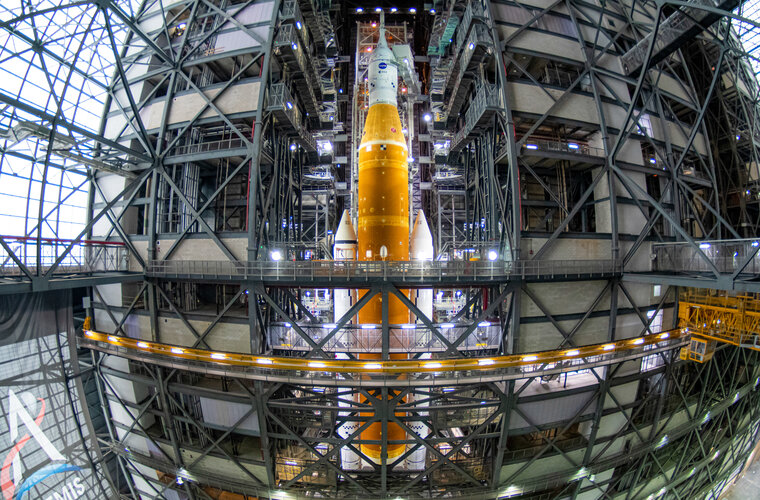
Week in images: 14 - 18 March 2022
Discover our week through the lens

